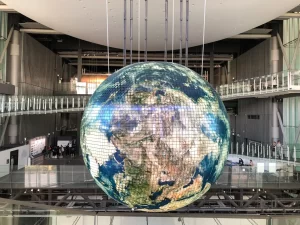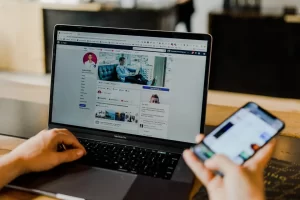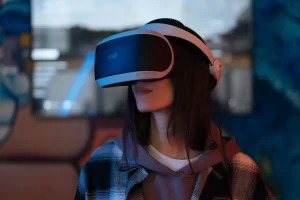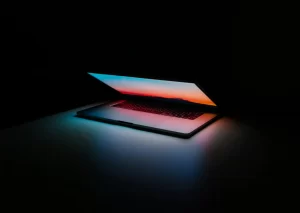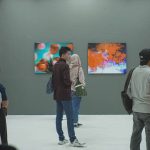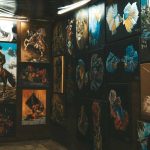Introduction to Innovative Art Promotion
Innovative Art Promotion: Embracing the Future of Creativity
Art promotion has traditionally revolved around galleries, exhibitions, and websites, forming a conventional landscape that artists navigate. However, as the world evolves, so does the way art is consumed and appreciated. This article delves into the changing dynamics of art promotion, exploring the need for innovation and teasing exciting, unconventional methods that redefine how art is presented and experienced.
In the traditional realm of art promotion, galleries, exhibitions, and websites have long been the cornerstone, providing a familiar landscape for artists to showcase their work. However, in the ever-evolving world we inhabit, the dynamics of art consumption and appreciation are undergoing a profound transformation. This article aims to delve into the shifting landscape of art promotion, emphasizing the pressing need for innovation. It explores how embracing unconventional methods can redefine not only how art is presented but also how it is experienced by a diverse and dynamic audience.
Technological Trends
Augmented Reality (AR) Experiences
Innovative art promotion now explores the realm of augmented reality, providing audiences with immersive and interactive experiences. AR apps allow users to superimpose digital artworks onto their physical surroundings, blending the virtual and real worlds. This not only engages audiences in novel ways but also opens up possibilities for creative storytelling and artistic expression.
Blockchain and Digital Collectibles
The integration of blockchain technology has revolutionized how artists promote and sell their work. Blockchain ensures transparent and secure transactions, and digital collectibles (NFTs – Non-Fungible Tokens) have emerged as a unique way for artists to monetize their digital creations. This decentralized approach to ownership and provenance adds a layer of innovation to art promotion in the digital age.
Artificial Intelligence (AI) Curations
AI-driven algorithms are now being employed to curate and recommend artworks tailored to individual tastes. This innovative approach personalizes the art discovery process for audiences, creating a more engaging and satisfying experience. AI curations also provide artists with insights into audience preferences, enabling them to refine their promotional strategies.
Immersive Virtual Reality (VR) Exhibitions
Building on the success of virtual exhibitions, the integration of virtual reality takes art promotion to new heights. VR exhibitions create fully immersive environments where users can navigate and explore artworks in three-dimensional space. This innovative approach not only enhances the visual experience but also fosters a sense of presence and connection.
Interactive Online Workshops and Demos
Art promotion goes beyond showcasing finished pieces; it involves bringing audiences into the creative process. Interactive online workshops and live demonstrations allow artists to engage with their audience in real-time. This hands-on approach not only demystifies the artistic process but also establishes a direct and participatory connection with art enthusiasts.
Community-Centric Platforms
Art promotion is increasingly centered around community-building platforms that foster connections among artists and their audiences. Online forums, social networks, and collaborative platforms provide spaces for shared experiences, discussions, and the exchange of ideas. This sense of community enhances the overall impact of art promotion, creating a supportive ecosystem.
The Changing Landscape of Art Promotion
The advent of digital platforms and online communities has ushered in a new era for art promotion. Today, engaging with the audience is paramount, emphasizing interactivity and the shift towards niche audiences seeking personalized experiences.
Embracing Social Media Dynamics
Social media has become a powerhouse for art promotion, providing a dynamic space for artists, galleries, and art enthusiasts to connect. Platforms like Instagram, Pinterest, and TikTok offer visually-driven content that resonates with audiences. Artists can showcase their work, share behind-the-scenes glimpses, and build a dedicated following.
Interactive Virtual Exhibitions
Virtual exhibitions have gained prominence, offering immersive experiences accessible to global audiences. These exhibitions go beyond static displays, incorporating interactive elements such as 3D walkthroughs, live chats, and virtual reality components. This not only extends the reach of art promotion but also provides audiences with engaging and memorable encounters.
Niche Marketing Strategies
Art promotion has evolved from broad strokes to targeted approaches. Niche marketing allows artists and galleries to tailor their promotional efforts to specific audiences with shared interests. This personalized approach fosters a deeper connection with the audience and enhances the likelihood of meaningful engagement.
E-commerce Integration
The integration of e-commerce platforms has transformed art promotion into a seamless transactional experience. Artists can sell their works directly through online galleries, reaching a global market. This shift has democratized art sales, allowing artists to connect with collectors without the traditional intermediaries.
Data-Driven Insights
Art promotion in the digital age benefits from data-driven insights. Analytics tools provide valuable information about audience demographics, preferences, and engagement patterns. This data empowers artists and galleries to refine their promotional strategies, ensuring they align with the evolving expectations of their audience.
Collaborative Campaigns and Partnerships
Collaborations between artists, influencers, and brands have become prevalent in art promotion. These partnerships leverage shared audiences, amplifying promotional reach. Influencers, known for their ability to connect with specific demographics, play a crucial role in expanding the visibility of art in the digital realm.
Creative and Unconventional Methods for Promoting Art
Interactive and Immersive Experiences
-Augmented Reality (AR) Installations: Transforming physical spaces with digital overlays, creating a unique blend of the virtual and real.
-Virtual Reality (VR) Galleries: Offering fully immersive environments where art takes on a new dimension.
-Projection Mapping: Turning buildings and objects into dynamic canvases, adding an element of surprise.
-Interactive Sculptures: Responding to audience movements, blurring the line between observer and participant.
Collaborative and Social Media-Driven Approaches
-Hashtag Campaigns: Encouraging audience participation through social media challenges.
-Artist collaborations: Cross-promoting with other creatives to expand reach and influence.
-Social Media Takeovers: Allowing artists to connect directly with audiences through live-streamed studio sessions.
-Interactive Online Exhibitions: Integrating user-generated content for a more immersive experience.
Unconventional Venues and Unexpected Partnerships
-Pop-up Galleries: Utilizing public spaces like abandoned buildings for temporary art installations.
-Street Art Projects: Engaging with urban landscapes through murals and public installations.
-Business and Brand Partnerships: Collaborating for unique art integrations in unexpected places.
-Art Vending Machines: Dispensing prints or smaller works in interactive kiosks, making art accessible on the go.
Technology-Driven Promotion and Innovation
-NFTs and Blockchain: Ensuring Secure Art Ownership and Provenance in the Digital Realm.
-AI-Powered Art Generation: Creating personalized art experiences through artificial intelligence.
-Gamification: Turning art appreciation and collecting into interactive and rewarding experiences.
-Data-Driven Analysis: Understanding audience preferences through analytics to tailor promotions effectively.
Conclusion
Innovation is the heartbeat of art promotion, and embracing unconventional methods is vital for the evolution of the art world. As we navigate a future filled with creative possibilities, artists are encouraged to experiment and push boundaries, ensuring that art remains a dynamic and accessible part of our lives.
In this era of rapid change, where the boundaries between physical and virtual spaces blur, artists have the opportunity to redefine how their work is presented, consumed, and shared. The evolving landscape encourages a spirit of experimentation that not only challenges established norms but also ensures that art remains a dynamic and accessible part of our lives. The intersection of technology, creativity, and unconventional thinking opens up new frontiers, fostering a vibrant and ever-evolving relationship between artists and their audiences.
Key Takeaways
-Art promotion is evolving with the rise of digital platforms and the importance of engaging niche audiences.
-Innovative methods include AR installations, social media-driven campaigns, unconventional venues, and technology integration.
-Artists are encouraged to experiment with and embrace these unconventional approaches to ensure the future dynamism of the art world.
-Technology-driven promotion, including blockchain for NFTs and AI-powered personalization, opens new possibilities for artists.
Frequently Asked Questions
How can artists incorporate technology into their art promotion?
Artists can embrace technology through AR installations, VR galleries, AI-powered personalization, and utilizing blockchain for NFTs, ensuring secure ownership.
Are unconventional venues suitable for all types of art?
Yes, unconventional venues like pop-up galleries, street art projects, and interactive kiosks can enhance the appeal of various art forms and engage diverse audiences.
How can artists benefit from social media-driven approaches?
Social media-driven approaches such as hashtag campaigns, collaborations, and live-streamed sessions amplify visibility, foster engagement, and build a loyal fan base.
What role does data-driven analysis play in art promotion?
Data-driven analysis helps artists understand audience preferences, enabling targeted promotions that resonate with their audience.


